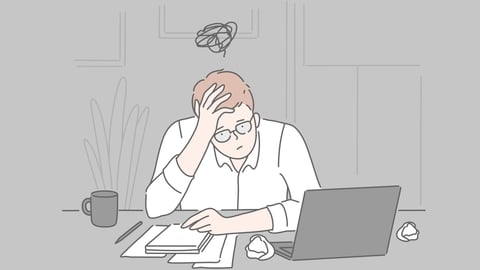Stigma around mental health continues to be a barrier in the workplace
The pandemic thrust the issue of mental health into the spotlight as large numbers of working Canadians reported struggling with things like burnout, stress and anxiety. We recently spoke to Dr. Donna Ferguson, clinical psychologist at the Centre for Addiction and Mental Health’s (CAMH) Work Stress & Health Program about what’s threatening workers’ mental health today and how employers can take meaningful action to address the problem. The interview has been edited for clarity and length.
We’ve heard a lot about workplace stress and burnout, especially in the last few years. What are some of the main factors contributing to worker stress currently?
With burnout, much of it stems from people feeling like they don’t have control over what they do. Sometimes it’s a job demand, it’s hours feeling overwhelmed, and not getting much work-life balance. I think all of that still applies today, as it did during the [height] of the pandemic. In addition to that, there’s the uncertainty over going back to the office, whether part time or full time. Some people may still have anxieties about the virus. I think all these things taken together can be quite stressful and have played a role in people’s mental health, anxiety, mood issues, depression — all of those things. As well, people working from home sometimes feel they’ve got to put more hours in; that they’ve got to show they’re working. This has caused a lot of stress and burnout — the longer hours you work, the less breaks you take, the less time for self-care — It’s a huge, huge problem.
A lot of companies are now talking about mental health, but surveys also tell us few Canadian workers feel they’re getting enough support from employers. How can employers more effectively address mental health?
It really starts with creating a workplace strategy. How do you improve employees’ mental health and wellbeing? Not just their mental health, but their physical health as well. You must ensure they have access to resources. And people will say, ‘Well there’s EAP’ [Employee Assistance Program] and I’m not saying that’s not a good resource, but there should be a lot more than that. We need to cater to what their mental health and physical needs are at this point and there’s no one-size-fits all solution. We must see what works for people and look at the options out there to make mental health be more accessible.
What are some common missteps companies make when attempting to tackle this issue?
Not checking in with employees. Regular check-ins where you’re asking: ‘How are you doing?’ ‘Is there anything you need?’ It can go a long way, and people will feel cared for. In addition, if employers don’t build or encourage a stigma-free environment, sometimes things like bullying and harassment can occur. Employers need to pay attention to those things. And then, having a one-size-fits-all approach won’t work; you need to have a broader choice of resources for people. Also, not allowing flexibility and not building a work culture that includes a work-life balance. Pushing people beyond their limits is a big problem.
Are attitudes towards mental health changing?
I do think there’s some progress being made. It’s slow, but I think the pandemic has helped in a weird way. Organizations/employers have had to adjust and be more flexible and build more resources around mental health. Obviously, there’s been an increase in anxiety for some people; for example, mothers who have been in lockdown at home with their kids. That was a huge stress and employers have had to respond to things like that. The conversations are happening.
Anything else?
Building and creating a stigma-free work environment is extremely important. When I’m trying to help people get back to work, I’ve seen that if they feel they’re not supported by their employer, or they feel they can’t talk about their mental health issues, or feel ashamed because of how people will view them — it’s such a barrier to returning to work and sustaining work. It’s something, I feel, is important for employers to pay attention to and work on. And I need to mention equity, diversity and inclusion as it has become increasingly important. And it’s something we should continue to focus on and incorporate into the workplace in different ways, not just piece-mealing it with ‘okay, here we go, we’ve got a workshop on EDI.’ It should be more about ‘how do we incorporate it into everything that we do?’ And these things should be led from the top down. If it starts there, then it really does trickle down and creates a better work environment.
This article was first featured in Canadian Grocer’s June/July issue.




